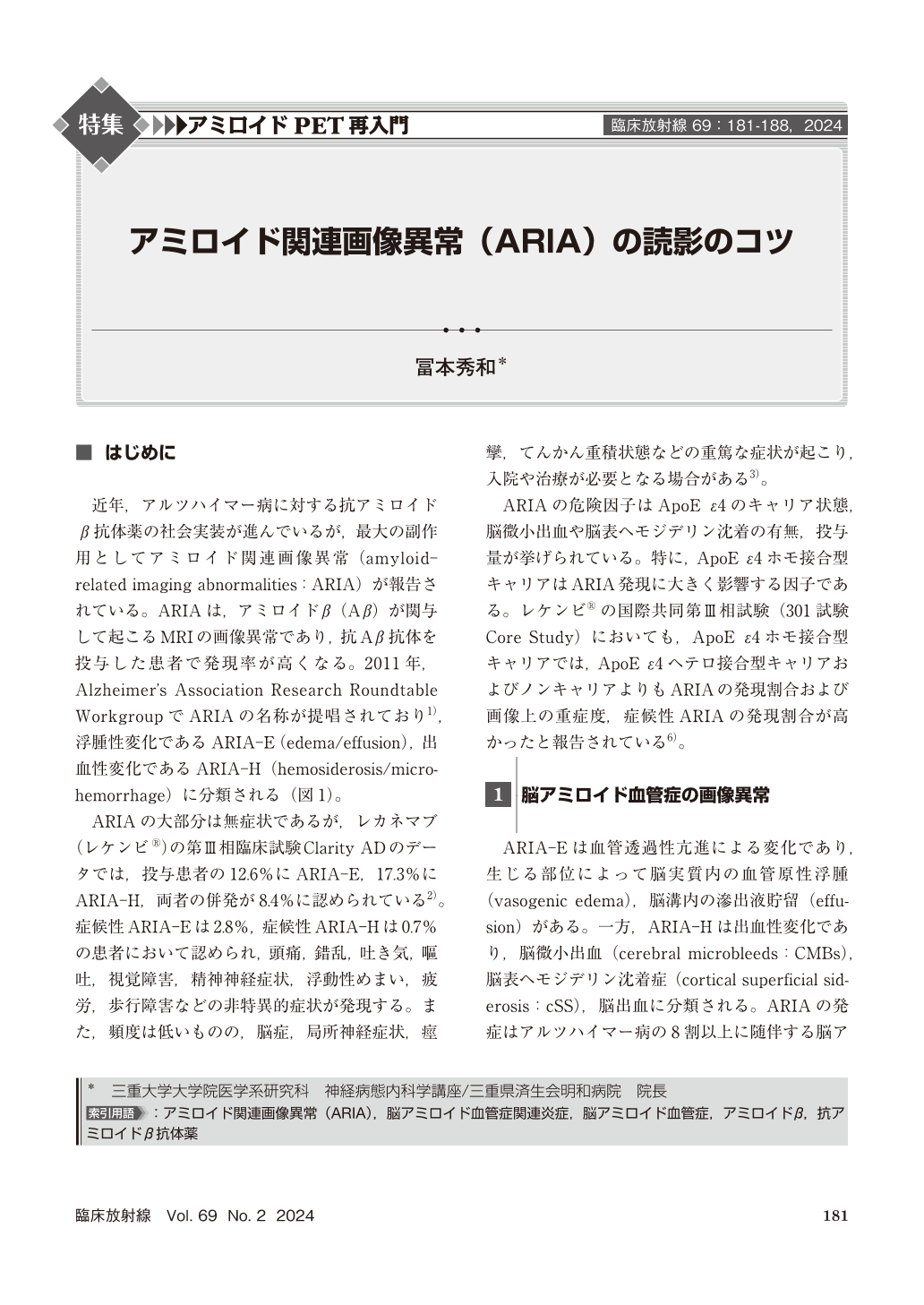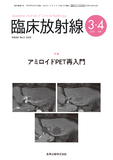Japanese
English
- 有料閲覧
- Abstract 文献概要
- 1ページ目 Look Inside
- 参考文献 Reference
近年,アルツハイマー病に対する抗アミロイドβ抗体薬の社会実装が進んでいるが,最大の副作用としてアミロイド関連画像異常(amyloid-related imaging abnormalities:ARIA)が報告されている。ARIAは,アミロイドβ(Aβ)が関与して起こるMRIの画像異常であり,抗Aβ抗体を投与した患者で発現率が高くなる。2011年,Alzheimer’s Association Research Roundtable WorkgroupでARIAの名称が提唱されており1),浮腫性変化であるARIA-E(edema/effusion),出血性変化であるARIA-H(hemosiderosis/microhemorrhage)に分類される(図1)。
Amyloid-related imaging abnormalities(ARIA)are found in relation to amyloid β and the frequency increase after treatment with anti amyloid β antibody. These findings are classified to ARIA-E(edema/effusion)and ARIA-H(hemosiderosis/microhemorrhage). ARIA-E manifest as hyperintese area in the white matter and hypertintense rim in the cortical surface. ARIA-H appears as cerebral microbleeds, cortical superficial siderosis and subcortical hemorrhage. This review overviews the etiology, clinic-radiological characteristics of ARIA, and thereby, reveals tips to diagnose ARIA efficiently.

Copyright © 2024, KANEHARA SHUPPAN Co.LTD. All rights reserved.


